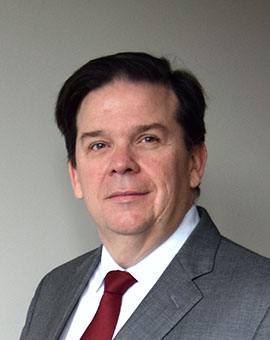In an interview with Dr. Thomas Cameron, Director of Wireless Technology at Analog Devices talks about Fifth Generation communication and Analog Devices solution and developments.

Dr. Thomas Cameron is the Director of Wireless Technology at Analog Devices. In this role he contributes to industry leading innovation in integrated circuits for radio base-stations and microwave backhaul systems. He is currently working on the research and development of radio technology for 5G systems in both cellular and microwave frequency bands. Prior to his current role at Analog Devices he was Director of Systems Engineering for the Communications Business Unit.
-
Tell us about 5G communication and its future.
The 5G cycle is well underway, with many field trials completed and many in progress globally. 5G introduces flexibility and new features which enable new use cases and sets the stage for the wireless standard that will carry us into 2030 and beyond.
Looking forward we see no slowing in the generation and consumption of mobile data as video sharing becomes pervasive throughout our society. But the future of connectivity is also about connecting to the world around us as we enter into the coming age of machines. We are entering an age of digital transformation that will profoundly change the way we live, the way we work, the way we move about on a daily basis. While the current smartphone is an interface between humans and information, future devices will be actively communicating with each other independent of human interaction, monitoring the environment around us through a dense network of connected sensors. At the core of this coming digital transformation are highly capable networks connecting everyone and everything.
While we as engineers, tend to focus on the emerging specifications such as bandwidth, latency and such, one of the foundations of 5G is flexibility. If we observe how the specifications are forming, we see the waveforms being defined to address a range of use cases currently envisioned with provisions for use cases not even yet imagined.
At a high level, 5G is motivated by the desire to enable 3 major use cases.
- Enhance Mobile Broadband (eMBB)
- Massive Machine Type Connectivity (mMTC)
- Ultra-reliable Low Latency Communications (uRLLC)
Currently, much of the industry 5G focus is on the enhanced mobile broad band, driving toward high network capacity and higher throughput.
-
Where technology best fits and contributes?
Enhanced mobile broadband drives a need for higher data throughput and higher network capacity. Cellular base-station capacity can be increased though three major initiatives, acquiring new spectrum, increased base-station density and improved spectral efficiency. While we continue to see new spectrum added and network density increasing, there remains a need for improved use of the spectrum. Massive MIMO has emerged as a technology that can provide significant improvements in spectral efficiency.
-
What are the enhancements and its current work?
Massive MIMO has been demonstrated to provide 3 to 5 time improvement in mobile data throughput with promise for further improvements. Massive MIMO trials have been completed by many mobile operators globally and it is expected that commercial deployment of this technology will commence in the 2019 to 2020 timeframe across various regions.
-
How this technology is bringing challenges for engineering community?
In Massive MIMO systems we add many more radio channels to the systems scaling from typical 8T8R TDD radio head (8 transmitter, 8 receivers) to a system of 64T64R. While the massive MIMO systems provide much improvement in base-station capacity, there are many challenges for the radio designer to achieve the required size weight and power consumptions.
-
How ADI products help and what are your recent solutions for 5G developments?
There are various approaches to reduce the size, weight and power consumption of the radio system. The major areas for improvement include circuit integration and improved power efficiency. We promote the need for system level thinking to solve these big problems. While integration is of course the most direct path to radio shrink, integration on its’ own may not yield the desired dividends. If we however, examine the system and optimize the architecture for integration, we render much more impressive result. For example, if we build on a radio architecture that can reduce and/or eliminate large filters and other passive elements, this leads to an overall superior solution.
Analog Devices’ portfolio of integrated radio transceivers brings forth a high level of integration providing a significant improvement in size weight and power consumption. In addition, the adoption of a zero-IF radio architecture leads to the overall lowest system complexity and power consumption.
-
Tell us more about Analog Devices RadioVerse Wireless Technology and how it accelerates 5G?
The Radioverse is the embodiment of how we have leveraged our system level approach to bring value our customers. Our comprehensive Bits to Antenna product portfolio plus System level expertise enables us to become more than a vendor, we become a partner with our customers to help solve their toughest problems. For example, by engaging and leveraging the Radioverse environment on our website, customers can rapidly move from concept to prototype all the way through to production.
Whether our customers are designing with our highly integrated transceiver products or our leading edge data converter and RF portfolio, the Radioverse provides extensive technical information to aid in the design process.
-
Can you share the commercial reality of 5G and its adoption and growth?
At re end of 2017, the 3GPP published the first 5G specification. While this non-standalone spec is the first of many steps in achieving 5G, this does enables the SoC vendors to move forward with modems to support the 2019 availability of 5G handsets. While the spectrum of choice varies by region, it is expected that 5G deployments will commercially launch in 2020. We expect that 5G Massive MIMO will leverage mid-band spectrum in many regions followed by mmwave deployments as this technology matures.






